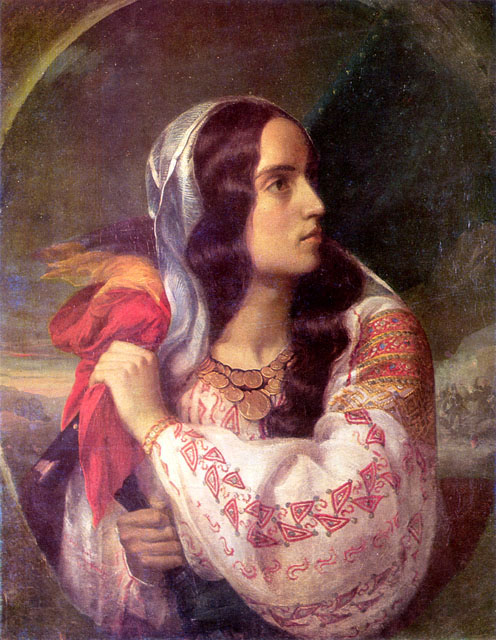
The modern identity of Romanian Jews developed simultaneously with the Romanian identity. Jewish artists in Romania, like other artists, travelled abroad to study and work, mainly in Paris and Munich and were influenced by trends in European art, such as Academic art, Romanticism and patriotism.
The mid 19th century period around the milestone year "1848" played a crucial role in the history of Romanian painting, supplying it with the opportunity to assert itself along the lines of modern European art, then dominated by Academic art and a romantic impetus rooted in egalitarian values and patriotism. Among the most prominent representatives of this great moment in the history of the 19th century Romanian culture were, Teodor Arman, Mişu Pop, Ion Negulici, Constantin Daniel Rosenthal and Barbu Iscovescu. The latter two were Jewish, and played an important role in the 1848 Revolution in the Romanian principalities.
The struggle for emancipation of the Jews in Romania began during the 1848 Revolution, and two of the three artists that were engaged in the preparation of the symbols of the revolution, were Jews. Constantin Daniel Rosenthal and Barbu Iscovescu, along with Ion Negulici were called "The Painters of the Revolution." Iscovescu, created the tri-colored flag with its slogans, "Justice-Brotherhood, " and Rosenthal painted "Revolutionary Romania" and "Romania Breaking off her chains. " Their commitment to the revolution and their shared tragic fate ending up in arrest and death in prison for Rosenthal, or in exile for Iscovescu, symbolized an idealistic epoch where artistic dedication and political social action come together.
With the suppression of the revolt, their situation deteriorated again, and the government continued its refusal to grant collective emancipation to Jews. Under these circumstances it was difficult for Jewish artists, who, like all Romanian Jews until 1919, were considered foreigners, to identify with the culture which rejected them. Thus, the generation of Jewish artists that were born in the second half of the 19th century, including Nicolae Vermont, Arthur Mendel and Salomon Sanielevici were less engaged in Romanian politics. They studied in Munich and Paris, spent part of their lives abroad, and their works revolved around the leading artistic movements of their age.
Amelia Pavel, Jewish Painters in Romania 1848-1948, Editura Hasefer, Bucharest 2003